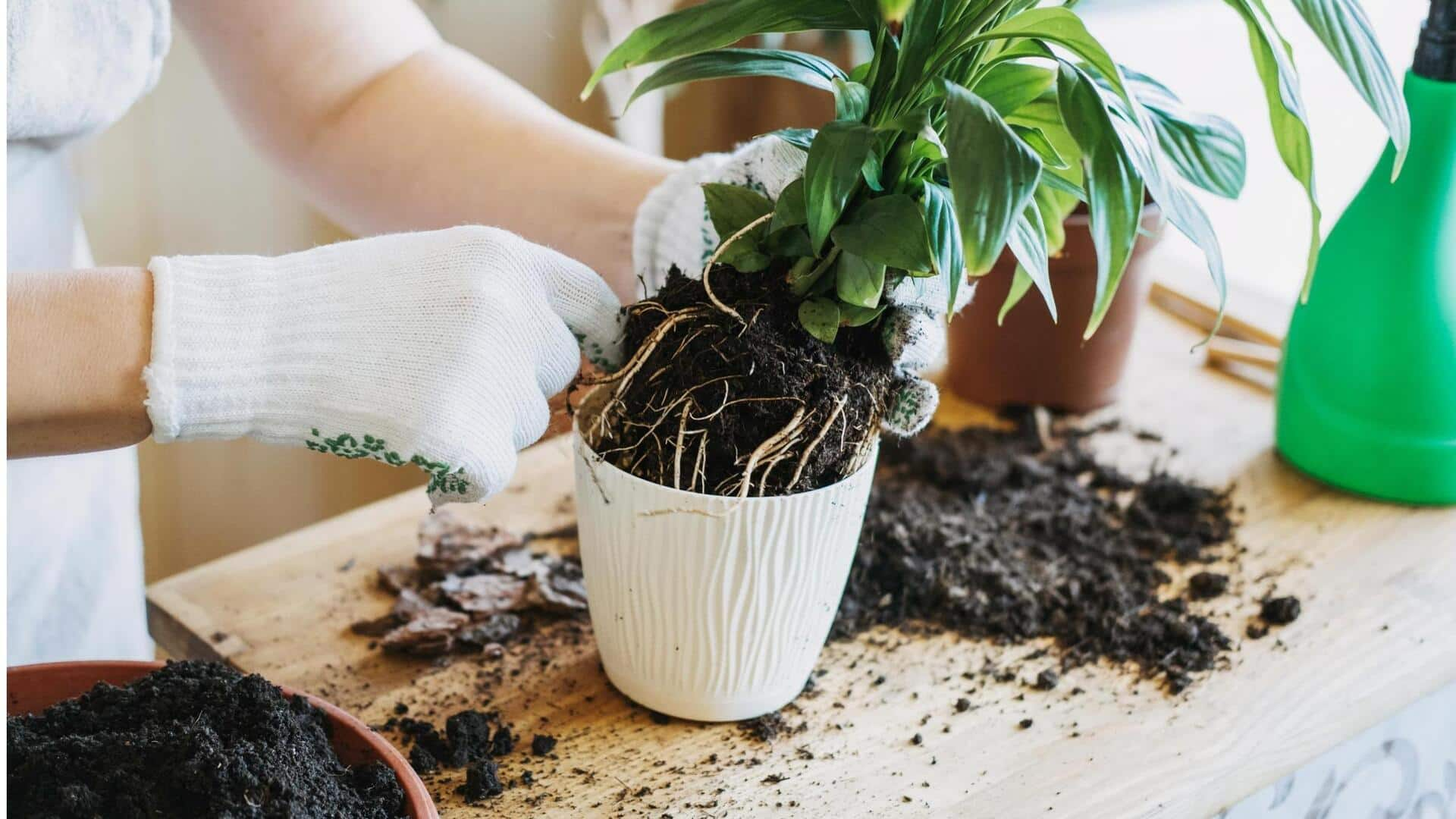
5 signs it's time to repot your houseplant
What's the story
Repotting houseplants is an integral part of plant care that keeps them healthy and thriving. Knowing when a plant needs a repot can be the difference between life and death for it. This article lists five major signs that it's time to shift your houseplant to a new pot. Knowing these signs, you can give your plants the best environment possible.
Root bound
Roots growing out of drainage holes
When roots start coming out of the drainage holes at the bottom of the pot, it is a clear sign that your plant has outgrown its current container. This means that the roots are looking for more room and nutrients. If left unchecked, this can lead to root-bound conditions where growth is stunted due to lack of space and resources.
Rapid drying
Soil dries out quickly
If you observe the soil in your plant's pot dries up a lot faster than normal, it may be time for repotting. This usually occurs because there's more root mass than soil in the pot, leading to water retention issues. As a consequence, frequent watering becomes a necessity, which may not always be good for certain plants.
Growth issues
Stunted growth or yellowing leaves
Similarly, stunted growth or yellowing leaves can signal nutrient deficiency due to depleted soil or overcrowded roots. When plants don't get enough nutrients from their environment, they struggle to maintain healthy foliage and overall vitality. Repotting into fresh soil with ample nutrients can help alleviate these problems.
Stability concerns
Top-heavy plant or leaning pot
Top-heavy plants or those causing their pot to topple over indicate that the plant has outgrown the pot. There is an imbalance between the size of the plant and its container. Such instability might lead to tipping over or damage if not dealt with immediately by repotting into a bigger pot with better support.
Salt accumulation
Mineral buildup on soil surface
White crusty deposits on your plant's soil surface indicate a mineral buildup from fertilizers and tap water salts over time. These deposits can harm plants by affecting nutrient uptake efficiency through root systems. Hence, replacing old soil during repotting helps prevent further accumulation while providing fresh nutrients needed for optimal growth conditions.